Month: July 2021
With the fast pace of cloud changes, cloud lock-in remains a popular refrain. But do you know what does it mean? How can you make sure that you’re boosting your cloud investment at the same time maintaining portability in mind?
In this article, we are going to talk about how business owners and analysts will strategize the best cloud approach to maximize their ROI and gain ten times better solutions with the proper cloud architecture.
Cloud bursting! Hybrid cloud! On & Off-premises! Multi-cloud! Cloud strategists, analysts, and architects are aware of these phrases over the past ten years. Each of them makes logical sense, but in recent times, it’s the last – multi-cloud – that I’ve seen in actual practice the most.
If you are not clear about what multi-cloud is — let me explain!
What is multi-cloud?
Multi-cloud is the utilization of two or more public and/or private cloud providers to assist the IT services and infrastructure of an organization. A multi-cloud strategy typically consists of a mix of primary public cloud providers particularly, Amazon Web Services (AWS), Google Cloud Platform (GCP), Microsoft (Azure), IBM, and Alibaba.
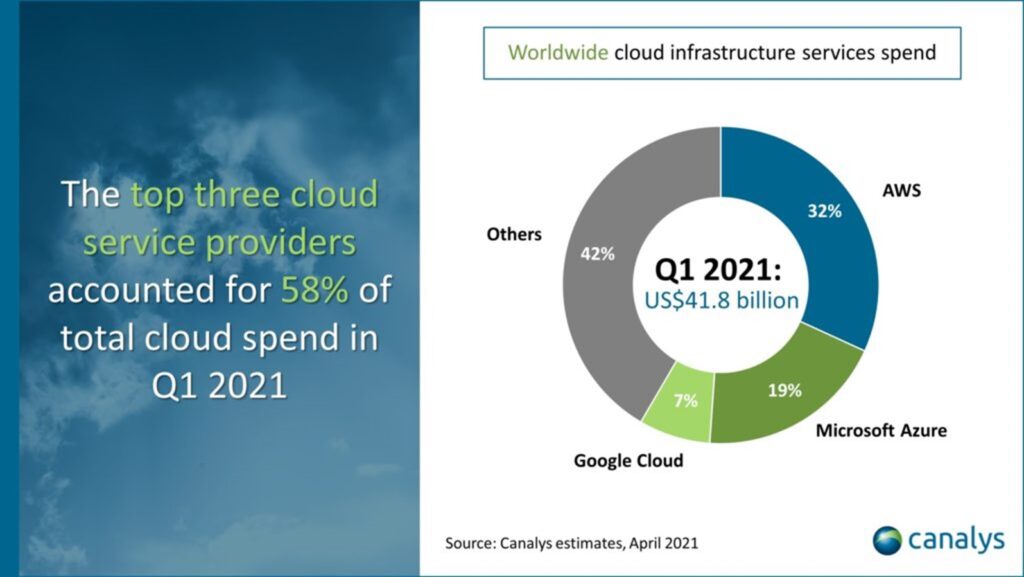
Businesses that embrace a multi-cloud architecture may leverage various public clouds in combination with private cloud deployments and traditional on-premises infrastructure.
Organizations prefer the best services from each cloud provider based on values, technical specifications, geographic availability, and other factors. Each day, every organization practices multiple types of data and diverse applications. Most of the cloud vendors specialize in a particular area, so being able to use different clouds encourages companies with the agility they need. This may mean that a company uses Google Cloud for development/test while using AWS for disaster restoration and Microsoft Azure to concoct business analytics data.
What is a multi-cloud strategy?
A multi-cloud environment can combine SaaS, PaaS, and IaaS deployments from more than one public or private cloud service provider to meet an organization’s technical and business needs.
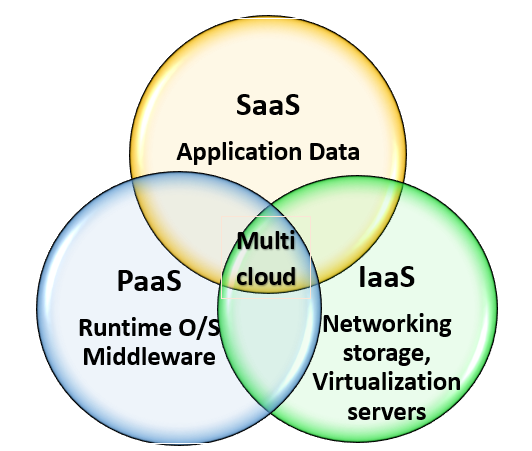
For example, many businesses initially jump into the cloud tepidly, at least one small service or application at a time. Shortly, this converts unwieldy, and you have to clean up your cloud sprawl. Hence, you need a strategy.
A multi-cloud approach empowers organizations to advance the efficiency of their IT spending and business operations by preferring an appropriate service and provider for each use case. The main concern of every organization is to reflect their needs are and align their needs with the best cloud providers applying a multi-cloud strategy. The forester industry analysts conducted an in-depth analysis of over 600 cloud strategy professionals to determine the leading use cases for multi-cloud architecture.

Below we have discussed the modern use cases for a greater understanding—
- Selectively deploying application workloads over multiple public and private clouds depends on the application and business needs.
- Combining on-premises infrastructure and services from multiple public clouds in a hybrid cloud environment.
- Evolving API-consistent cloud architecture across both public and private clouds.
- Developing data-center abilities and extending disaster recovery capabilities.
- Governing access to cloud-based data, applications, and services within a specific control portal.
- Advancing applications with components deployed to various cloud platforms.
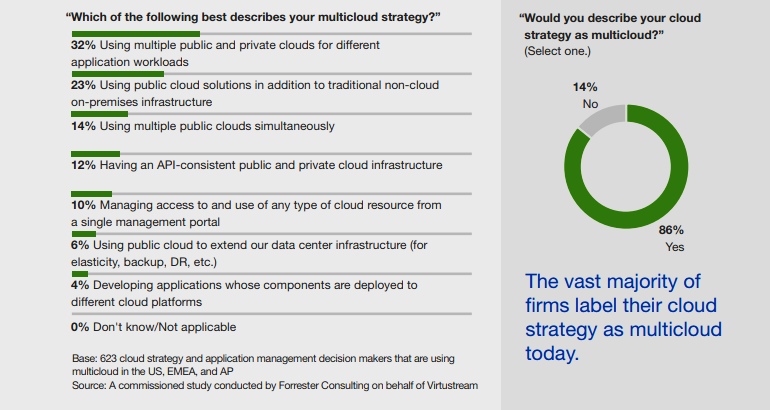
You can have highly available apps existing in one ideal cloud solution and actually sensitive data that you don’t need to access often in a different cloud solution applying the best multi-cloud approach. This one might be slower but more secure—and that’s OK!
The continuous IT investment will optimize multi-cloud architecture and deployments to recognize actual strategic advantages and aspirations. Are you interested in a closer look at seven of the most influential drivers for multi-cloud investment?
Reasons Organizations Choose a Multi-Cloud Strategy
Recent Forrester research found that almost 80% of enterprises describe their strategy as a hybrid/multi-cloud one. Multi-cloud is quickly establishing itself to be the prospect of business across every sector. To prevent vendor lock-in, drive down costs, and ensure agility, many organizations are now looking to multiple clouds for their operational needs.
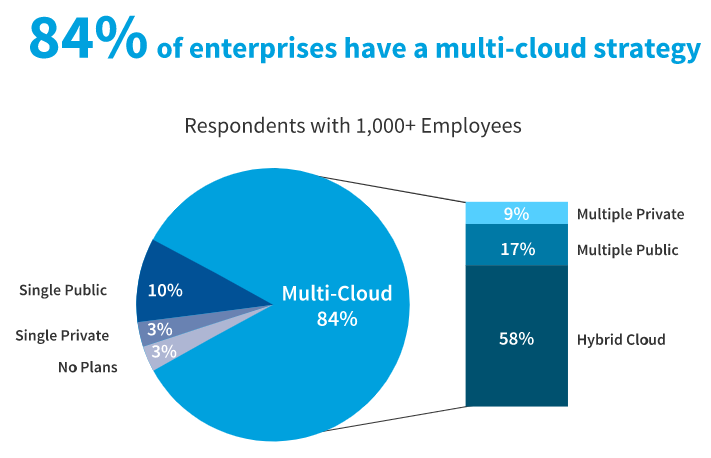
According to the same research, only 42% of organizations regularly optimize their cloud spending, and only 41% maintain an approved service catalog. So, it is always important to remember that without a strong understanding of what is being used and where organizations risk circumventing the benefits of a multi-cloud strategy and settling themselves with high budgets and security risks.

Avoiding Vendor Lock-In
Vendor lock-in occurs when an organization faces too much complexity to transfer its business apart from one cloud service provider to another provider or even bring its data back on-premises.
Organizations that rely on a single cloud service provider normally develop applications that depend profoundly on the unique potentials of that vendor. As those organizations broaden their investment in that single cloud, switching providers becomes more expensive, complex, also takes an enormous time.
In contrast, organizations that already have devoted themselves to a multi-cloud strategy purposely plan for agility and flexibility between multiple cloud providers. With the adaptability to move applications between multiple public cloud vendors, organizations are poised to take recognition of new technologies from all providers and adopt the well-functioning or most cost-effective services for specific application workloads.

Choosing a multi-cloud strategy can help your business avoid vendor lock-in, take support of new and better technologies from other providers, and adopt the most cost-effective and performance-enhanced compute or storage resources for each workload.
Overcoming Data Gravity
Data performs a significant role in daily operations for thousands of businesses. Organizations have traditionally kept their data in on-premises data centers where it could be spelled out by legacy applications, but in the cloud computing era, more are preferring to regulate data in the cloud and analyze them with cloud-based applications.
The term “Data Gravity” refers to the concept that large data sets are troublesome and expensive to move or migrate. If your organization keeps a large volume of data with a single cloud service provider, data gravity could push you to deploy related apps and services with the same provider—even when there are more cost-effective options accessible in another cloud.

Overcoming data gravity is as manageable as utilizing a cloud-attached storage solution that combines multiple clouds simultaneously. The best solutions minimize latency by hosting your data close to cloud data centers.
Better workload optimization
Whenever you approach any public cloud service provider, they offer their blend of physical infrastructure components and application services with versatile functionality, usage characteristics, terms & conditions, and pricing. They also release new features regularly to make their services more efficient, cost-effective, and attractive to customers.

Henceforth single cloud provider can’t claim to provide cost-optimized services that cover every potential business need or use case. But when you switch to a multi-cloud strategy, you can choose the most suitable cloud service provider for each application or workload, leading to enhanced application performance and improved cost-efficiency.
Elevating application performance
When cloud-based application services are released from servers at separate locations, data must travel across several network nodes before entering the user. In this pathway, slow data transfers may degrade application performance and negatively affect the user experience because of high network latency.
The market leaders of public cloud service providers (AWS, Azure, & Google Cloud) operate multiple data stations in geographically different regions, establishing a network of availability hotspots that deliver high-speed service to worldwide customers and users. By affirming a multi-cloud strategy and leveraging cloud services from the above one vendor, organizations can enter new geographies and implement better application and data performance for their users, wherever they are located.
Curbing Shadow IT
When autonomous business units within an organization select any technological solutions without the supervision of the IT department, shadow IT happens. Shadow IT leads to security concerns, notably whenever staff members use unsecured platforms outside of the organizational firewall to transact sensitive data. Based on the Gartner prediction in 2020, 30% or more successful cyberattacks will target Shadow IT resources within enterprise organizations.
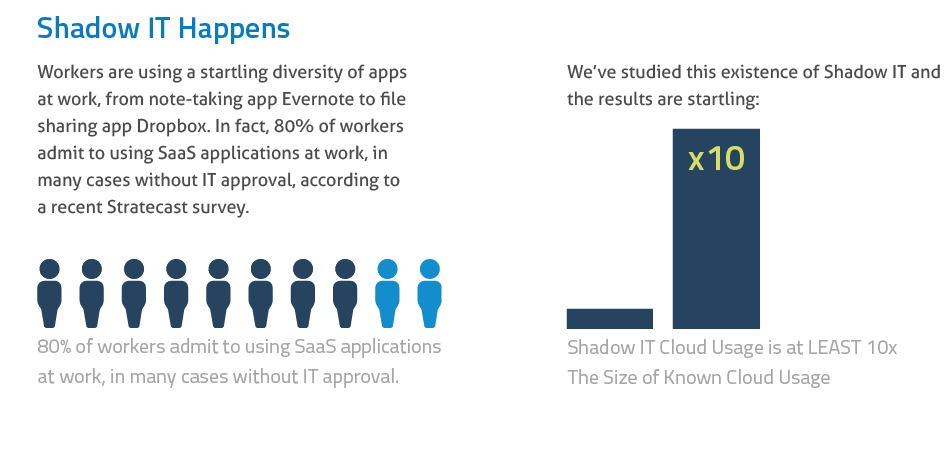
Organizations that are now adopting a multi-cloud approach can speed up their adoption of cloud services that drive employee productivity and collaboration, reducing the inducement for employees to execute new technologies without going through the channels.
Enhance disaster recovery capabilities!
A good number of public cloud service providers offer 99.5% uptime as part of their service level agreements — yet unplanned brownouts happen, and they can be extremely costly. According to a 2019 IT survey, it has been observed that organizations experienced an average of 830 minutes of unplanned downtime during the year, with an average cost of $5.6 million.
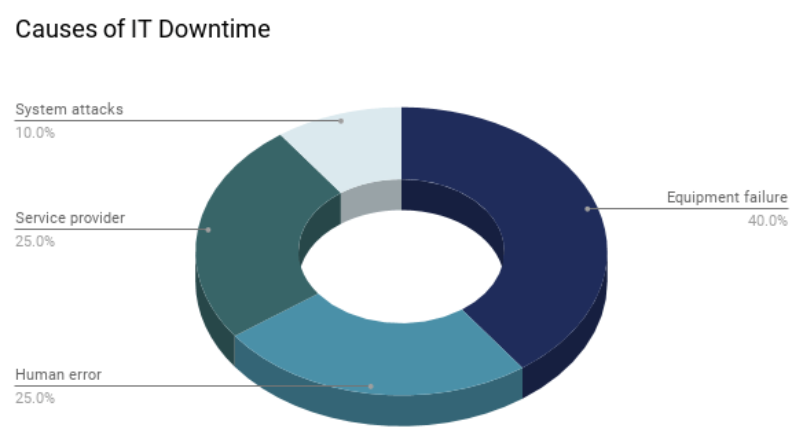
Organizations can respond to unplanned service outages by failing over their workloads from one public cloud to another with the help of a multi-cloud strategy. We provide our clients a customized solution on their failover models based upon application-specific needs, taking advantage of trade-offs between cost and performance to achieve a fully optimized disaster recovery strategy.
Meeting regulatory compliance and requirements
More organizations than ever now desire to meet regulatory compliance provisions referred to as data localization or data residency. Data localization laws may prohibit organizations from exporting data about a nation’s residents to other countries, requiring that the data be processed and locked away in the same region where it was collected.
Organizations can observe data localization or residency laws through a multi-cloud strategy by taking the assistant of cloud service providers with regional accessibility zones and data storage infrastructure.
Why should you choose Inovar to run your strategy?
Multi-cloud strategies are inherently complex. Legacy systems, disparate data sources, and different applications may start creating a unified plan for a momentous task. That’s why, to have multi-cloud perfect, more and more companies are searching for partners to help. The bespoke partners known as managed services providers help organizations embrace the cloud with speed, accuracy, and security.
There are many service providers out there. How do you understand which one is most competent for your organization?
According to the latest Forrester Wave: Multi-cloud Managed Services Providers report, enterprises should consider managed services providers that meet three criteria:
First, the provider should be able to uphold the organization during its entire cloud journey, from initial planning to migration, execution, and monitoring. At Inovar, we provide end-to-end services. We always try to know our pain points, requirements and suggest to you the best-suited solution. We offer you the supervision that you need to select the right capabilities to accomplish your business objectives- from cloud services to deployment, operation, and management.
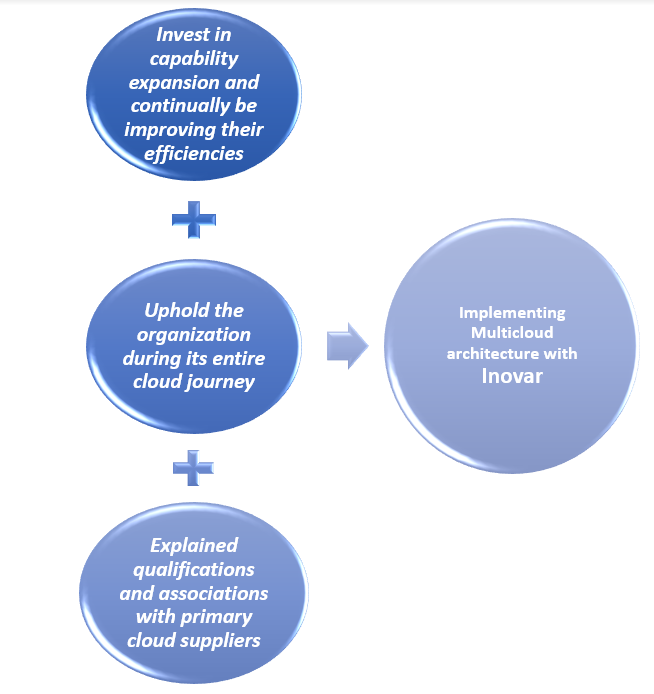
Secondly, providers must have the strength to invest in capability expansion and continually be improving their efficiencies. Cloud is one of the broadest platforms where technology is emerging constantly. Considering this fact, we always keep an eye on what is coming and suggest the best design strategy for resilience and success for years to come.
We maintain an atmosphere where you can promptly innovate, develop, obtain the ideal data at the right time, transfer workloads around as required, and draw full advantage of the latest progressions in AI, automation, analytics, and more so you can constantly iterate and enhance everything from applications to business processes. Starting from setting up your strategy to apply the best-automated approach, we try to ensure real-time optimization and help you build the skill sets you need to become more cloud-native.
Third, providers must have explained qualifications and associations with primary cloud suppliers. Our vendor-agnostic strategy lets you connect with the best services from well-known providers: Inovar multi-cloud platform is accredited by partners including Amazon Web Services (AWS) and Microsoft Azure for superb delivery and compliance to industry standards. Here you can find multiple options on the combination of vendors and get what you need.
Since most organizations are in business to generate money, we can safely say a multi-cloud strategy contributes to cash flow by taking care of money. Usually, challenges and solutions become more complicated when people address them sound more complex. But having the most suitable plan and the best people will ensure that your strategy lives for a very long time. If you are also looking for the same please reach out to us, we would love to collaborate.
With every progressive step of technological advancements, the priorities of CIOs are also changing. Process transformation and automation have gained much of leaders’ attention in recent times. Automation, the use of machines to perform work, most commonly refers to using the use of computer technologies to perform the tasks humans would otherwise do as part of their jobs. The use of computer-based process automation is widespread, with organizations deploying a broad range of software automation tools to help them reach the automation goals they set as part of their larger digital transformation objectives.

According to the December 2020 Global Intelligent Automation (intelligence AI) Study from Deloitte, *73% of organizations worldwide use automation technologies. That’s a significant increase from the *58% of organizations using such technologies in 2019. Gartner reported that organizations’ interest in a process of transformation is accelerating, demand for robotic process automation (RPA) software witnessing the growth of **19.5% from 2020.
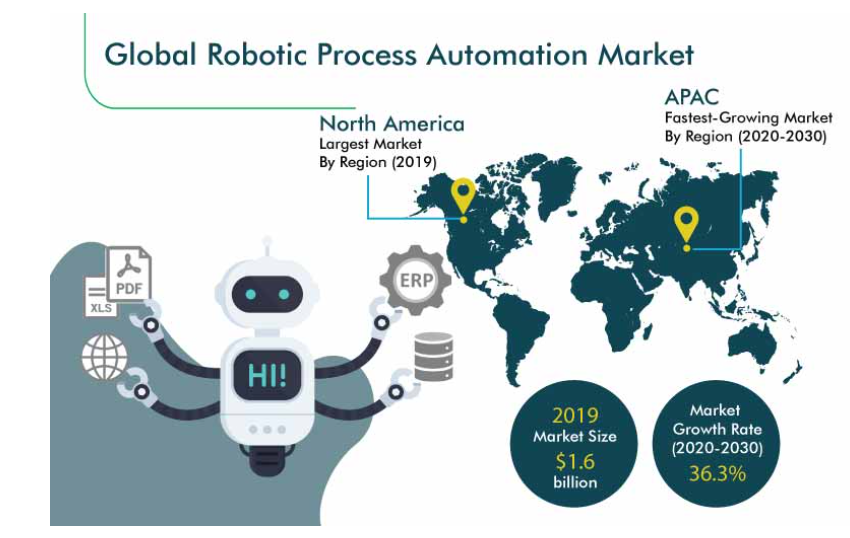
But, RPA is not the only process automation technology that companies are leveraging to drive goals, efficiency, and digital transformation. The diversified business sector embraces certain other automation options such as business process automation (BPA) and digital process automation (DPA). Each of the three technologies offers benefits, and each has distinctions that separate it from the others.
What is robotic process automation (RPA)?
RPA technology mimics the way humans interact with software via a UI to perform high-volume, repetitive tasks. The technology creates software programs, or bots, that can log in to applications, enter data, calculate, and complete tasks, and copy data between applications or workflows as required. But RPA doesn’t inherently have intelligence or decision-making capabilities. Hence, the work best suited to RPA is rules-based. These are discrete tasks done the same way over and over, with no deviations that require human decision-making. According to Gartner, RPA represents a major portion of the automation market. Experts believe that the primary benefits of RPA are increased efficiency, lower costs, and reduced errors. RPA bots can perform tasks faster and with consistent accuracy and reliability. They can work round-the-clock without taking breaks.
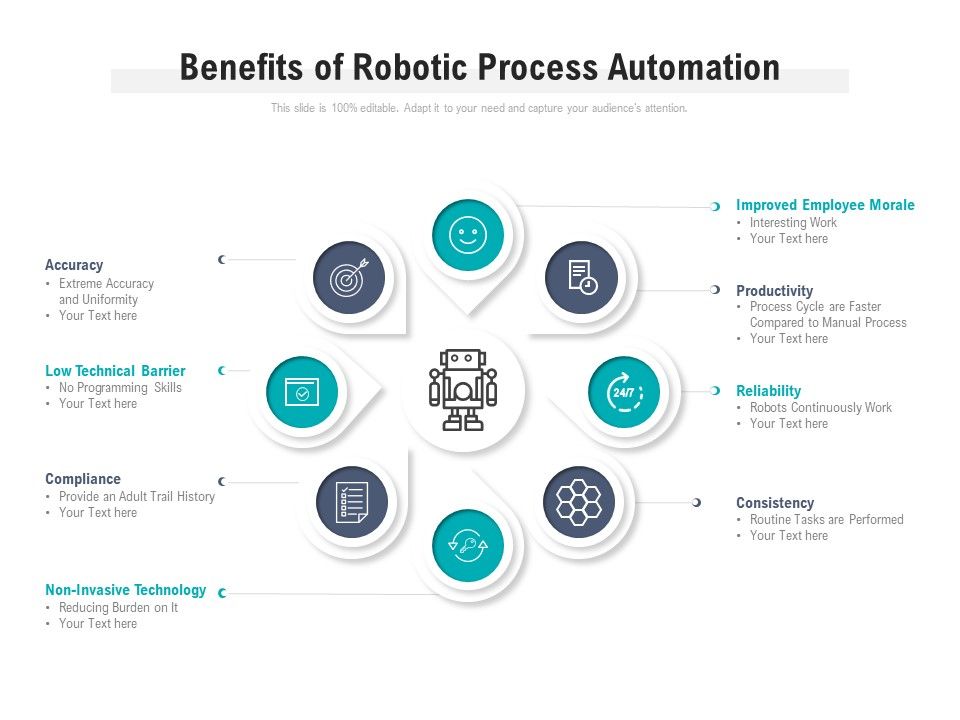
Another reason for RPA’s growing popularity in the enterprise is its relative ease of use. RPA works with an organization’s existing infrastructure and applications. Also, because many vendors offer low-code/no-code RPA platforms that require little to no programming experience, business users can harness RPA, creating their own bots with minimal help from their IT departments. As such, business users are driving much of the RPA adoption.
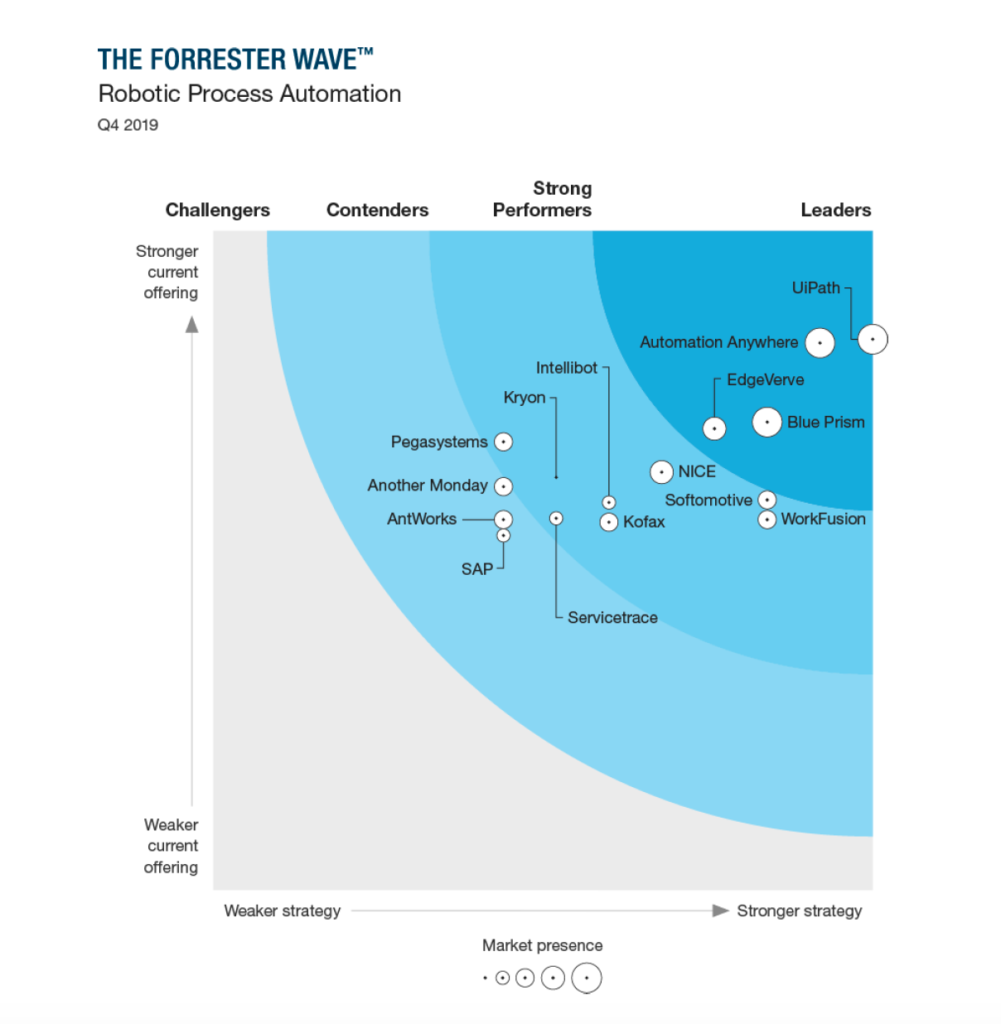
What is digital process automation (DPA)?
DPA is a software technology used to automate a process and optimize the workflow within an automated process. A big focus of DPA is to improve employee and customer experiences by taking friction out of the workflow. The software is used to create efficiencies and enhance UX experience in various areas of the enterprise, from IT service requests to onboarding new employees and client intake.

Organizations use DPA to automate a process from its beginning to its end. Typically, DPA is used for the longer and more complex processes than the tasks that can be effectively handled by RPA. These processes can contain multitudes of decisions that, if using RPA, would create bots that are too long and too difficult to maintain.
As per a ***Forrester schema, DPA is divided into two types: DPA-deep, and DPA-wide, which is closely related to RPA:
- DPA-deep is automation that transforms and improves a business process and, because of the complexity, requires skilled technologists to implement and focus on continuous
- business users and can be managed by the business and delivered using low-code platforms and Agile methods.
What is business process automation (BPA)?
BPA automates workflows within an organization; as one step in the business process is completed, the BPA software then automatically triggers the next step. BPA software is used to automate complex, multistep business processes that are usually unique to an organization and are part of the organization’s core business functions.

Size of the business process automation system (BPA) market worldwide from 2016 to 2021
BPA’s holistic approach stems from the technology’s capability to work across the multiple enterprise applications and systems required to complete a typical business process. Organizations often first analyze and improve a business process with a BPA approach before automating it, which is different from the mimic-as-is tactic typically used in RPA.

Reworked, optimized processes using BPA remove human hands from the workflow; with human workers no longer involved in the automated process, they’re not introducing individual workarounds or unauthorized changes to the workflow. Consequently, enterprises use BPA in their digital transformation efforts for the accuracy, efficiency, and reliability it brings to each automated process.
Experts Opinion on – RPA Vs BPA Vs DPA
Some experts use BPA as an umbrella term for a wide range of process automation technologies but there are varied opinions on that concern as well.
According to Gina Schaefer, intelligent automation lead at Deloitte Consulting LLP said- “DPA, BPA, and RPA — are practically interchangeable.”
She further added – “Digital, business process and robotic process automation are essentially the same. When applied appropriately, these refer to comprehensive end-to-end process automation. Specifically, these terms refer to the use of scripted automation software to mimic human actions in the execution of rules-based ‘swivel chair’ type tasks, typically where an individual accesses and processes data from multiple applications.”

InovarTech is ready to improve your automation experience. With our smart forms and streamlined workflows, you will be ready to tackle process technologies and know-how to adapt them to your institution. Reach out to us today to get started. You can take comfort in the fact that we know process automation and how to implement them effectively. Let us deliver high-volume processes to your doorstep.
Resources:
**– https://www.information-age.com/rpa-revenue-reach-nearly-2-billion-2021-gartner-123491711/